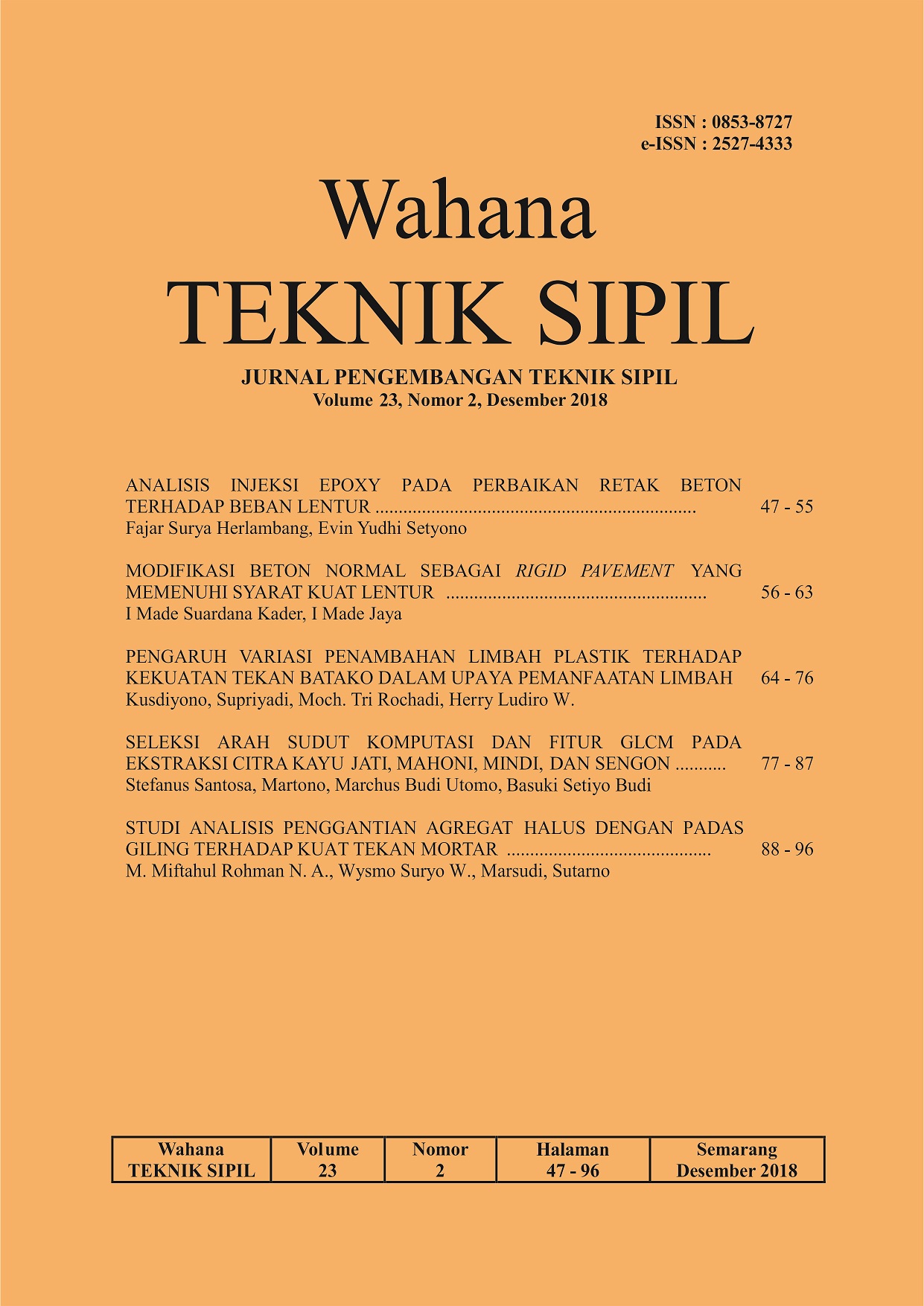Studi Analisis Penggantian Agregat Halus Dengan Padas Giling Terhadap Kuat Tekan Mortar
DOI:
https://doi.org/10.32497/wahanats.v23i2.1364Abstract
In the district of Pati, precisely in the area of Gedudero Village, Sukolilo District, is one of the milled corners. Milled Padas can be applied as a substitute for sand and stone times on the foundation. The purpose of this study was to find out the physical haracteristics (compressive strength) mortar mixture of ground beans and utilize milled pad as a substitute of fine aggregate in the manufacture of efficient mortar.The specimens made are cube shaped pieces of 5 cm x 5 cm x 5 cm with mixture ratio 1 PC: 4 Sand; 1 PC: 3 Sand: 1 Grind Padas; 1 PC: 2 Sand: 2 Grind Padas; 1 PC: 1 Sand: 3 Grind Padas; 1 PC: 4 Grind Padas. From the graph of test results of 28-day mortar strength pressures, it is known that the maximum compressive strength achieved by mortar with a mixture ratio of 1 PC: 3 Sand: 1 Grind Padas mixture of 144.84 kg / cm2. Mortar is made without using a mixture of grind padas with a ratio of 1 PC : 4 Sand yields a compressive strength of 132.88 kg / cm2. For the lowest compressive strength, obtain on mortar with mixture cement 1 Cement: 4 Grind padas of 109.80 kg / cm2. While to obtain an efficient mixture, obtained on mortar with a mixture of 1 PC: 1 PS: 3 PG. This grind padas can replace the sand with a certain mixture ratio.
Kata kunci : grind padas, compressive strength, mortar
Downloads
Published
Issue
Section
License
Authors who publish with this journal agree to the following terms:Authors retain copyright and grant the journal right of first publication with the work simultaneously licensed under a Creative Commons Attribution License that allows others to share the work with an acknowledgement of the work's authorship and initial publication in this journal.
Authors are able to enter into separate, additional contractual arrangements for the non-exclusive distribution of the journal's published version of the work (e.g., post it to an institutional repository or publish it in a book), with an acknowledgement of its initial publication in this journal.
Authors are permitted and encouraged to post their work online (e.g., in institutional repositories or on their website) prior to and during the submission process, as it can lead to productive exchanges, as well as earlier and greater citation of published work (See The Effect of Open Access).






